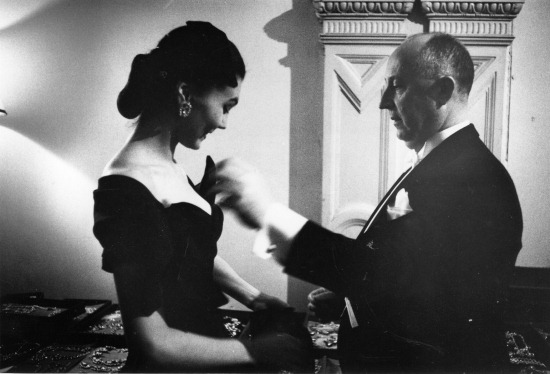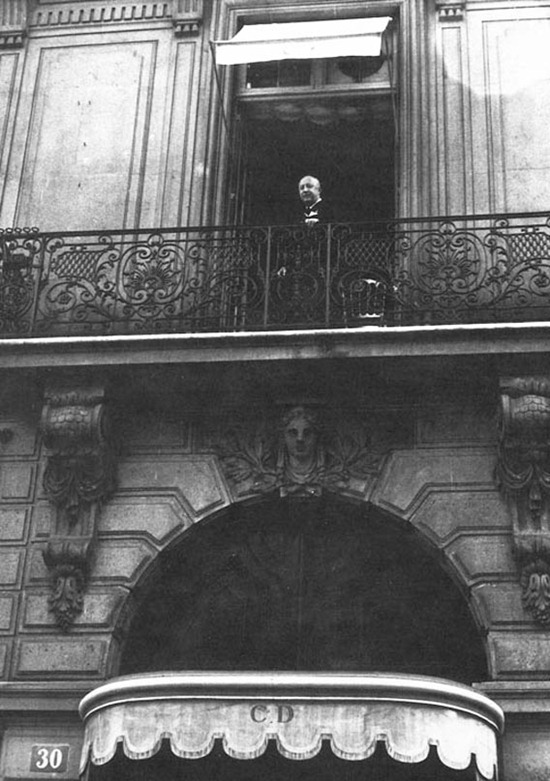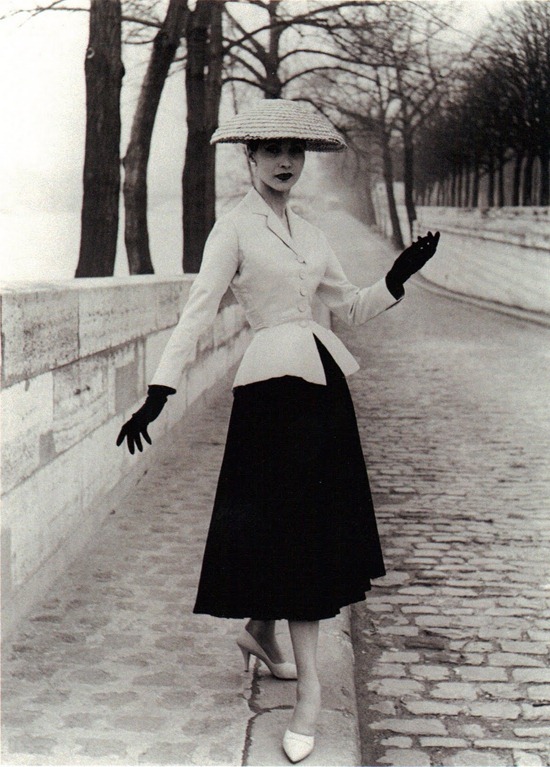Writing a story about Christian Dior isn’t an easy task and, to a degree, somewhat pointless since his life and achievements have been talked about to an extent that my innocent attempt seems nothing more than a drop in the ocean. Never the less here it comes…
Christian Dior was born on 21 January 1905 at 1:30 in the morning. His father, Maurice Dior, did very well for himself. By 1912 he and his cousin and business partner Lucien were successfully running a fertilising business, one of the biggest enterprises in Normandy, with a capital of 4 million franks, so the Dior family lived a very comfortable live spent between their house in Normandy and a beautiful Parisian apartment in the fashionable 16th arrondissement.
Needless to say little Christian had a very privileged and idyllic childhood. He wasn’t interested in school and barely scraped through. He did, however, discover his real passions: the carnivals, the secret and exciting Parisian destinations, art, good food, beautiful gardens and, of course, fashion. He often made costumes for his brothers and sisters and later, encouraged by this grandmother and with a help of a family seamstress, even took orders from real customers!
When in Paris he was the only child who was allowed to accompany his mother to a florist or dressmaker and even help with menu choices whenever a party was planned.
Just like his grandmother he believed in fate and fortune-tellers. In 1919 a gypsy told him that he will “achieve success through women” and “will make a great deal of money out them”. When the boy broke the news to his parents, it caused nothing more than teasing jokes and roars of laughter. Unlike the grandmother, Maurice and Madeleine Dior, didn’t seem to grasp the fact that their son was different, creative and not at all suitable for spending his life working as a company director or business administrator. When Christian told them about his dream of studying at the Académie des Beaux-Arts, their answer was “no”. It was definitely not something they wanted their son to study for living. And so Dior enrolled in the School of Political Science that allowed him to satisfy his parents wishes without making any commitments or changing his own plans.
More and more he found himself captivated by the world of fashion, particularly Poiret’s designs that Dior found inspirational. The main problem was that becoming a couturier was totally unacceptable for a man of his status and background. The only way for Dior to get closer to this world was working in an art gallery. His parents found the new idea suitable enough for their son to pursue. He received the required funds from his father accompanied by his mother’s wish that the name of Dior was to never appear in the title of Christian’s business. For Madeleine, running an art gallery was no different to owning a grocery store and an absolute disgrace to the family status.
The good fortunes continued until the early 1930s. In 1931 Dior’s brother Bernard has to be sent to a psychiatric institution. Heart-broken, Madeleine Dior wasn’t able to get through such a shock and passed away in May the same year. The family was broke due to the economic crisis and became virtually penniless.
It was the time for Christian Dior to find his own path. He stayed in Paris. The days were spent job searching, letting himself go, getting away from his bourgeoisie upbringing, dreaming the impossible… He noticed that people admired his talent and ability create beautiful clothes and accessories out of nothing. He began sketching dresses and hats, mastering the art of drawing, observing life around him and hoping for a chance to break through.
Eventually his designs became known. Nina Ricci, Schiaparelli, Balenciaga and Patou all became aware of Dior’s sketches and from 1935 the list of his clients began to grow.
In 1938 he was introduced to Robert Piguet, one of the most famous couturiers at the time. Piguet liked Dior’s sketches and asked him to design a few dresses for his upcoming collection and then offered him a full-time position as a modéliste. In 1939 he also began designing costumes for theatre plays.
The life seemed almost perfect. Then the war broke out. After spending the first few months at Mehun-sur-Yèvre where Dior rediscovered his passion for gardening and farming he received a letter from Piguet inviting him back to Paris. Unfortunately, by the time Christian returned, his position was filled and Dior had to find a new way to establish himself. He soon heard that Lucien Lelong was looking for a modéliste and joined the house.
Dior was happy again until one day when his fate brought him face to face with Marcel Boussac who was looking for a new designer to take over his couture house. The ninety minute meeting arranged a few days later showed that the two had completely different ideas about the new business venture. While Boussac was looking for a couture house that would create simple, elegant and solid designs that generate profit, Dior wanted a house of his own, a new and exciting adventure built on fashion knowledge and dreams. A few torturous days later Boussac sent a messenger to Dior. The offer was accepted and it was the time to find the right house. The No. 30 on the avenue Montagne was up for sale and turned out to be exactly the place the designer pictured in his mind.
At 9 o’clock in the morning of 9 December 1946, the small town house and a former dress shop became the Maison Dior. It had three work rooms in the attic, a tiny studio, a salon, a cabine where the models would change, an office and six small fitting rooms. Seeing his name light up on the building facade made him cry. “If my poor maman had still been alive, I would never have dared.”
In 1946 women still looked like Amazons. The curves were hidden under unflattering boxy suits with knee length skirts made of inexpensive fabrics due to the shortage of material caused by the war and uniforms. Dior wanted to change that and bring the femininity back.
With his love of architecture and clear-cut designs, Dior used a different technique that allowed him to mould the dresses to the curves of a female body, emphasising the hips, full feminine bust, round shoulders and tiny waist. The full bodied skirts made of yards and yards of silk were lined with cabric or taffeta according to an old tradition.
The collection was made under a lot of pressure. There was not enough space for the production team. Some were unfamiliar with the techniques, others struggled from the lack of space and long hours. One of the models collapsed with a nervous breakdown and had to be replaced on the spot. A night before the big day the collection of 90 designs called was finished.
It was 12 February 1947 10:30 in the morning when the first model appeared in a salon on avenue Montagne wearing the first look. The signature design of collection was the Bar suit, a two-piece ensemble consisting of a pale, fitted jacket with narrow waist, padded hips and a black, mid-calf, knife pleated skirt.
As the last model disappeared behind the curtains, the salon filled with an unstoppable ovation. The editor of Harper’s Bazaar was the first one to approach Dior. “It’s quite a revolution, dear Christian. Your dresses have such a new look” – she exclaimed.
The New Look was rediscovery of happiness, joy, love and beauty – all the elements women dreamed. Dior dresses were those dreams.
“As long as I live, whatever triumphs I win, nothing will ever exceed my feelings at that supreme moment.” Dior later wrote in his biography.






0 comments:
Post a Comment